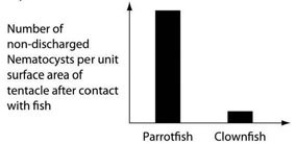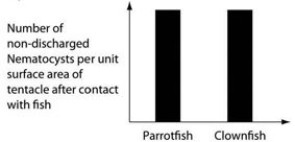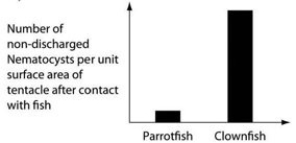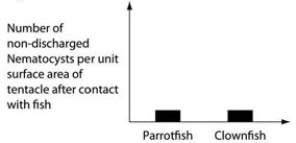Use the following information to answer the question below.
An elementary school science teacher decided to liven up the classroom with a saltwater aquarium. Knowing that saltwater aquaria can be quite a hassle, the teacher proceeded stepwise. First, the teacher conditioned the water. Next, the teacher decided to stock the tank with various marine invertebrates, including a polychaete, a siliceous sponge, several bivalves, a shrimp, several sea anemones of different types, a colonial hydra, a few coral species, an ectoproct, a sea star, and several herbivorous gastropod varieties. Lastly, she added some vertebrates-a parrotfish and a clownfish. She arranged for daily feedings of copepods and feeder fish.
The clownfish readily swims among the tentacles of the sea anemones; the parrotfish avoids them. One hypothesis for the clownfish's apparent immunity is that they slowly build a tolerance to the sea anemone's toxin. A second hypothesis is that a chemical in the mucus that coats the clownfish prevents the nematocysts from being triggered. Which of the following graphs supports the second, but not the first, of these hypotheses?
A) 
B) 
C) 
D) 
Correct Answer:
Verified

